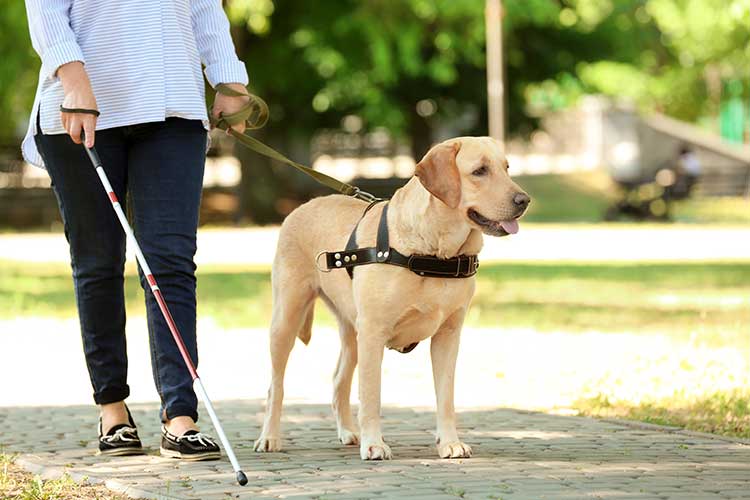When we think of disability, the first symbol that comes to mind for many people is a blue figure using a wheelchair - an image known as the International Symbol of Access (ISA) (Access Australia 2024).
Adopted as an international standardised symbol to indicate wheelchair-accessible environments, the ISA is now used in various settings to indicate a range of accessibility and disability-related matters.
Where the ISA arguably fails, however, is in its representation of the broader disability community. For instance, among the 4.4 million Australians (1 in 6 people) living with disability, only 4.4% use a wheelchair (Shrine of Remembrance 2022).

What is Invisible Disability?
Sometimes, disability can be identified by the presence of aids such as wheelchairs, canes, hearing aids and glasses (Disabled World 2025).
However, this is not always the case.
Invisible disability (or hidden disability) is an umbrella term used to describe disabilities that are not immediately noticeable when looking at someone. The term applies to a wide spectrum of conditions, including physical, mental and neurological disorders that impair daily functioning (IDA 2025).
Invisible disabilities include conditions such as chronic pain or illness, mental illness, injury and congenital disorders (Disabled World 2025).
It’s estimated that 8 out of 10 Australian people living with disability have an invisible disability (Life Without Barriers 2024).
Despite not being immediately obvious to others, invisible disabilities can cause significant daily challenges for those who have them (IDA 2025).
Because of their hidden nature, invisible disabilities can go unacknowledged, leading to a lack of sympathy and understanding within society (IDA 2025).

List of Invisible Disabilities
The following list covers some of the many invisible disabilities. Many of these conditions have their own Ausmed articles where you can find more information.
Note that this is not an exhaustive list.
- Attention deficit hyperactivity disorder (ADHD)
- Anxiety disorders
- Allergy
- Asthma
- Auditory impairment
- Autism
- Bipolar disorder
- Brain injury
- Myalgic encephalomyelitis/chronic fatigue syndrome (ME/CFS)
- Coeliac disease
- Crohn’s disease
- Depression
- Diabetes
- Endometriosis
- Epilepsy
- Fetal alcohol syndrome disorder (FASD)
- Fibromyalgia
- Inflammatory bowel disease
- Irritable bowel syndrome (IBS)
- Lupus
- Lyme disease
- Migraine
- Multiple Sclerosis
- Narcolepsy
- Primary immunodeficiency
- Rheumatoid arthritis
- Schizophrenia
- Ulcerative colitis
- Vision impairment (some people may wear contacts instead of glasses).
(Disabled World 2025)
Supporting People Living With Invisible Disability
As stated by the National Disability Insurance Scheme (NDIS) Practice Standards (2021), disability support workers have a responsibility to provide supports that:
- Are person-centred
- Treat participants with dignity and respect
- Promote participants’ individual values, beliefs, culture and diversity
- Protect participants’ privacy
- Allow independence and informed decision-making
- Are free from violence, abuse, neglect, exploitation and discrimination.
With this in mind, the following practical tips may help you support people living with an invisible disability:
| General considerations |
|
| People living with auditory impairment |
|
| People living with visual impairment |
|
| People living with cognitive impairment |
|
(Weiss 2019)
Conclusion

In your professional life, you are likely to interact with many people living with invisible disability. Therefore, it is important to avoid making assumptions and always treat your patients with respect.
Even if you can’t visibly see the challenges they face, acknowledge and understand their experiences as best you can.
Additionally, remember that disability affects people in different ways, and for that reason, it is important to always provide individualised and person-centred care.
Test Your Knowledge
Question 1 of 3
Which one of the following best defines invisible disability?
Topics
References
- Access Australia 2024, ISA – International Symbol of Access, Access Australia, viewed 26 May 2025, https://www.accessaustralia.com.au/isa-international-symbol-of-access/
- Disabled World 2025, Invisible Disabilities: List and General Information, Disabled World, viewed 26 May 2025, https://www.disabled-world.com/disability/types/invisible/
- Invisible Disabilities Association 2025, What is an Invisible Disability?, IDA, viewed 26 May 2025, https://invisibledisabilities.org/what-is-an-invisible-disability/
- Life Without Barriers 2024, ‘Understanding Invisible Disabilities’, Life Without Barriers News, 23 August, viewed 26 May 2025, https://www.lwb.org.au/news/understanding-invisible-disabilities/
- NDIS Quality and Safeguards Commission 2021, NDIS Practice Standards and Quality Indicators, Australian Government, viewed 26 May 2025, https://www.ndiscommission.gov.au/sites/default/files/2024-10/ndis-practice-standards-and-quality-indicators.pdf
- Shrine of Remembrance 2022, Disability in Context, Victoria State Government, viewed 26 May 2025, https://www.shrine.org.au/disability-action-plan-2022-24/disability-context
- Weiss, TC 2019, Invisible Disability and Etiquette, Disabled World, viewed 26 May 2025, https://www.disabled-world.com/disability/types/invisible/manners.php
 New
New 